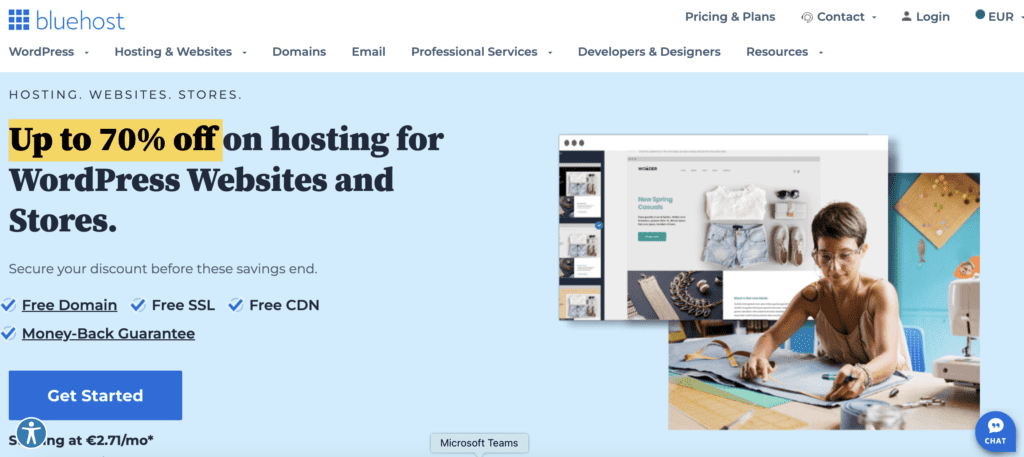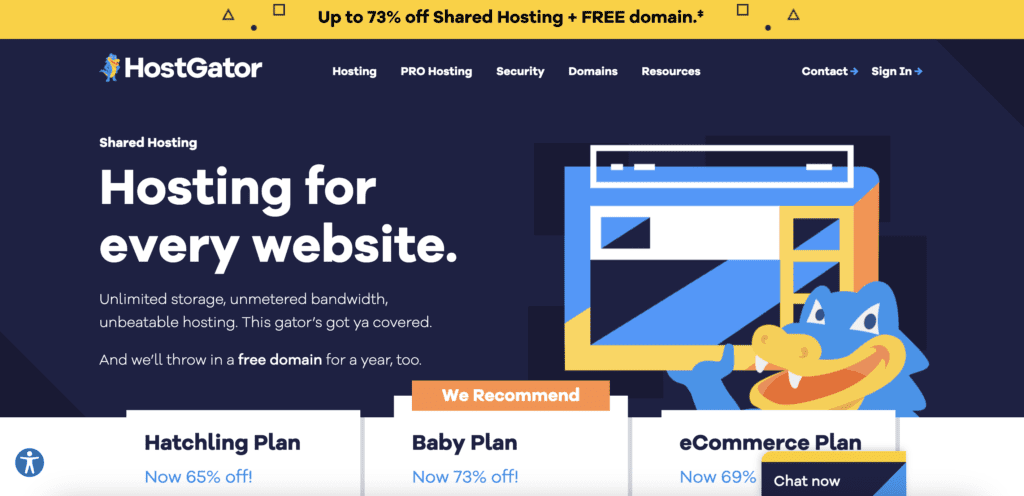11 Easy Steps: How Are Websites Created (Ultimate Guide)
Table of contents
Are you looking to create a website of your own? Is building a website hard? Having a question about how to get my website on the internet? Whether you’re running a business, an aspiring entrepreneur, or just someone who wants to make their mark online, it’s never been easier to get started. In this blog post, we’ll take you through the steps of creating your new website from scratch, and will explore simple steps and tools you can use to get your website today.

What is a website?
A website is a collection of related web pages, images, and other digital content hosted on a server that can be accessed via the internet. Different websites are used for many different purposes, including sharing information, making sales, marketing products or services, providing customer service, and conducting business. They are also an important tool for creating visibility and brand recognition. In today’s digital world, websites are essential for businesses to reach their target audience and establish their online presence. Websites also provide a platform for customers to learn more about your products or services, contact you with inquiries or feedback, and engage with your brand in meaningful ways. Furthermore, they can help to increase traffic to your site by allowing customers to find you through search engines such as Google. By creating a well-designed website that is easy to use and navigate through, businesses can create a sense of trust and connection between themselves and their customers.
Different types of websites
Websites come in a variety of forms with different purposes and functionalities. Static websites offer basic information, such as contact details or an introduction page to a business, and can often be managed online with little coding knowledge to create a site required. If the content is rarely updated then this type of website is ideal for the task. Dynamic websites are more complex, offering interactive content and tools that allow users to search and update data from databases in real-time. These could include e-commerce stores, forums, and subscription services. Content management systems (CMS) are used to handle the creation and updating of content on larger more complex sites. Popular examples of CMS include WordPress, or Squarespace. Finally, there are web application websites that are tailored to suit specific needs such as customer relationship management (CRM) software or project management applications.
How websites are used in various industries
Websites have become ubiquitous in various industries and are used in a variety of ways. For businesses, they are a key marketing tool, providing customers with information about their products and services as well as offering a platform for online sales or reservations. They can also be used to build brand awareness and loyalty, allowing customers to learn more about the company’s values, mission, and initiatives. Websites can also be used by educational institutions to host lectures and provide students with resources related to course material. They are also often used by nonprofit organizations to disseminate important information about their missions and goals, as well as campaigns they’re running that need support. Websites have become invaluable assets to all types of organizations, offering them a platform through which they can reach their target audience quickly and effectively.
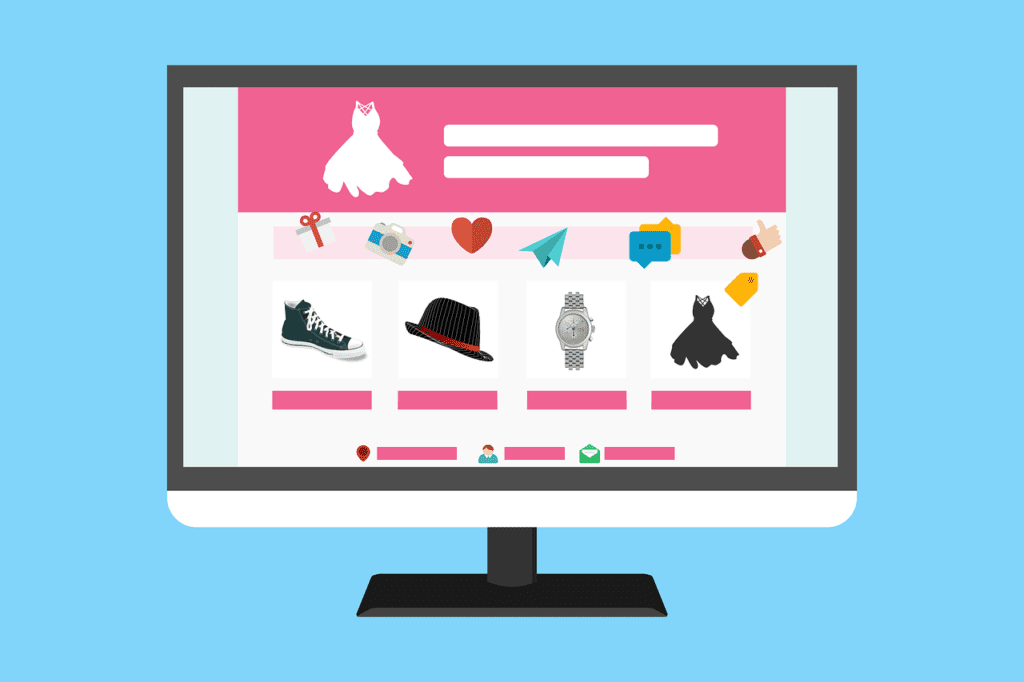
How do websites work?
Is creating a website hard? The good news is that you don’t need technical knowledge or design skill to build your website. You’ll find later in the article how to get a website up and running. Here are just general details about how to do website work.
Websites are composed of webpages, which are documents written in a language called HTML. The webpages are stored on a server, which is a type of computer that stores and delivers the content to other devices. When someone views a website, their device connects to the server and retrieves the webpage. The webpage is then displayed on the user’s device. In addition to HTML, websites often use other languages such as JavaScript or CSS. These languages provide additional functionality that makes web pages more interactive and can allow them to update in real-time. For example, JavaScript might be used to create an animation or update content based on user input. CSS is used to define how elements such as text should look and how they should respond when interacted with by the user. Websites also connect with databases that store information such as user accounts or product listings. A database is like an organized collection of data that gets queried whenever users request specific information from a website. For example, when you log into an account on a website it retrieves your login credentials from the database and uses them to authenticate you as a user so that you can access your account information. Eventually using a website URL like htts://www.mysite.com you can access your website.
What to know when creating a website?
Website creation involves many components. The most essential components are content, design, and development. Content helps to establish the purpose of a website. This can include text, images, audio and video files, or interactive elements like forms. Website content should be well-organized and informative for the best user experience. Design is how a website looks visually. This includes things such as typography, colors, page structures, and images used to create a unique user experience. The design also includes accessibility features to ensure that all users have an enjoyable time on the website regardless of their device or disability. Development is where the functionality of a website comes into play. This includes coding languages like HTML, CSS, and JavaScript with which the design is created and implemented onto the web page. When combined with content management systems such as WordPress, development makes sure visitors can interact with the site in an intended way and that data is secure from external threats. Lastly, there is maintenance which helps ensure that websites remain up-to-date with current trends and technology by making continuous improvements every now and then for peak performance across all platforms—desktop/laptop computers, tablets, smartphones, etc.
Website design and development
Website design and development is the process of creating a website from start to finish. It involves planning, building, testing, and optimizing a website in order to meet its purpose. The design phase includes deciding on the structure of the site, how it will look visually, and what features it needs to include. The development phase includes coding or programming the site using various web technologies such as HTML, CSS, JavaScript, and more. Testing ensures that the website works properly across different web browsers and devices. Finally, optimization consists of making sure that the website loads quickly and that SEO techniques are applied for increased visibility in search engines like Google. A successful website design and development project requires an understanding of user experience (UX) principles, knowledge of current web standards and best practices, as well as collaboration between developers, designers, content creators, marketers, project managers, and more.
Web hosting and domain names
Web hosting and domain names are essential components of having an online presence. Web hosting is the process of storing a website on a server so that it can be accessed by the public via the internet. A domain name is the address visitors type in to access your website; it is essentially your website’s address or identity. Having good web hosting and a reliable domain name allows visitors to easily find and access your site without any interruptions or errors. Furthermore, web hosting services provide key features like increased website speed, extended storage space, and enhanced security measures. This gives users an improved experience which can result in larger numbers of returning visitors. Having a valid domain name also helps with SEO efforts as search engines use it when indexing websites for rankings in search results. In short, web hosting and domain names are key elements to having an online presence, as well as helping with visibility and security for those accessing your site. It is vital that businesses make sure they have reliable web hosting solutions and valid domain names so that their online presence remains efficient and secure for all users.
Content management systems
Choosing a content management system, such as WordPress, provides an easy way for businesses to manage their content online. Choosing one can be a step in your website creation process. They allow users to quickly create and edit webpages, upload images and videos and keep track of comments from customers on their websites. These systems are highly customizable, allowing businesses to tailor the look and feel of their website without having to know any code or programming language. Additionally, with plugins like WooCommerce, businesses can even start selling their products directly from their site. Content management systems make it easy for organizations to keep their site up-to-date with fresh content and deliver a great customer experience.
Website Design Best Practices
Website Design Best Practices involve taking into account user needs and expectations when designing a website. It also involves understanding the goals of the website, such as improving customer service or increasing sales, and how to make those goals more achievable through the design. Aspects of web design best practices include making sure users can easily find what they need on the site; that navigation is intuitive; that content is easy to read; and that images are used to both enhance the visual appeal and convey information. Additionally, creating a responsive website design—one that adjusts automatically to different devices and screen sizes—is an important best practice for both customer engagement and search engine optimization. Following these principles helps ensure your site looks great, functions effectively, and meets customer needs.
Is designing a website hard? Well, yes and no. There are numerous website building tools with ready-to-use templates, you can get a basic 3 page website literally in minutes. Many website builders come with a free plan so you can experiment and create a site design draft for free. But to get a more custom and more complex design you may need to hire a freelancer or design agency to build a stunning website design for you.
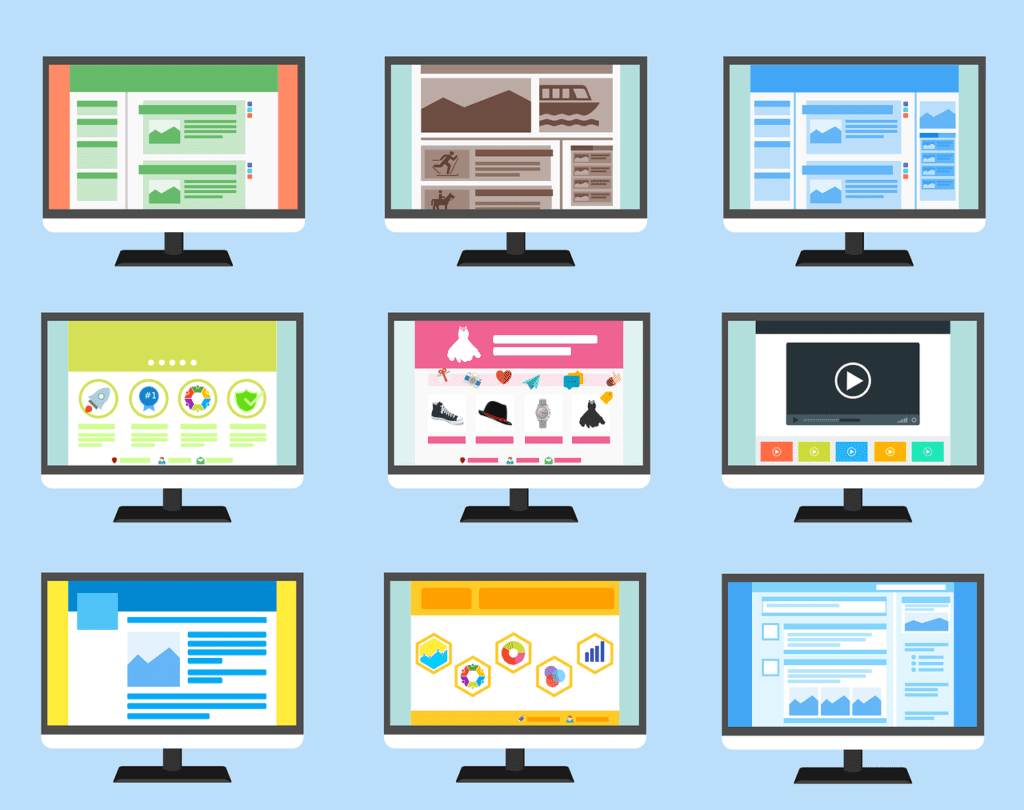
User experience matters in website design
Is it hard to design a website that people like and that is easy to use? Here user experience (UX) plays an important role. It’s all about making sure visitors have the best possible experience when they visit a website. Good UX makes people feel welcome and comfortable, encourages them to explore and learn more, and ultimately leads to positive outcomes such as making a purchase, signing up for a newsletter, or submitting contact information. Good UX starts even before someone visits your website – it begins with SEO optimization so people can find it easily. After that, user-friendly navigation helps them move through the site quickly. Responsive design ensures they’re seeing content on any device they’re using and an intuitive layout guides them through the content logically. Clear calls-to-action direct their focus where you want it and help drive conversions. Finally, UI elements such as animation and visuals draw attention to important areas of the page and make the user experience interactive and engaging. Ultimately, when UX is done right, website visitors feel like their needs are understood and met, making them much more likely to take action – whether that’s subscribing to a newsletter, making a purchase, or just exploring further into the site. Focusing on user experience at every step of site design will
Clear navigation is important.
Among other website elements, having a clear navigation and site structure on a website is incredibly important for ensuring users are able to find the necessary information quickly and easily. Site structure should act as an intuitive guide for users, with navigation links and menus allowing them to navigate the different areas of the website. This allows users to move quickly between pages without having to search through content or click through multiple pages to find what they’re looking for. A well-structured site also makes it easy for search engine crawlers and bots to index content, improving its visibility in search engine results. It’s important that websites have a consistent layout throughout their pages, this helps ensure users don’t feel lost or confused when they visit different sections of the website. By using categories, search bars, and other features thoughtfully placed throughout each page, navigating the site should feel straightforward and logical to users. Site structure also has an impact on how much content can be included on each page; careful consideration should be given when deciding how much content should be displayed in order to avoid overcrowding or confusion for visitors. In summary, having a clear navigation and site structure is essential when creating a website in order to provide visitors with an enjoyable user experience that enables them to access the
Use visuals to complement your content
Using visuals to complement your content is essential in order to engage and draw in the reader. Visuals such as images, videos, infographics, and illustrations make your content more appealing and can help convey complex ideas or points more quickly and easily than text alone. Visuals can also break up long or dense blocks of text, making the content more attractive to readers and easier to digest. Additionally, visuals provide an opportunity for creativity and expressing a unique brand identity. They can also be used to create strong emotional connections with readers while providing powerful calls to action. Furthermore, visuals can help boost search engine optimization (SEO) by creating organic links back to your site or blog which increases overall visibility online.
Don’t forget about responsive web design
While creating a new website, don’t forget about responsive design. Responsive web design is the method of designing websites that are flexible and responsive to users’ behavior and environment based on screen size, platform, and orientation. It is an essential tool for modern website development because it creates an optimal viewing experience for users, regardless of their device or browser. This means no horizontal scrolling, no hiding of information due to tiny fonts, and layout changes depending on the size of the device’s screen. By using responsive web design, a website can adapt its layout to fit any device, from smartphones to tablets and desktop computers. The importance of responsive web design lies in its ability to provide users with a smooth experience across any device they may be using. This is especially important when considering mobile devices which now account for over half of all web traffic worldwide. If your website isn’t optimized for different sizes of screens, it could cost you a substantial amount of potential visitors who will instead seek out competitors who do offer a better user experience on mobile devices. Furthermore, Google now takes into consideration mobile-friendliness when ranking websites in its search results so having your website optimized for different sizes is essential if you want it to appear at the top of search engine rankings.
Trying to create a responsive design on your own can be hard, but don’t let it intimidate you, nowadays there are many easy-to-use website builders with design templates where what you see is what you get in design and many of those templates come with already in-build support for responsive design.
Summary of best practices for website design
Best practices for website design include: creating a visually appealing layout, making sure navigation is clear and intuitive, optimizing page loading times, using quality images and graphics, including search functionality to help visitors find content quickly, utilizing calls to action throughout the site, and providing quality content that adds value. Additionally, web designers should consider the mobile experience when designing sites, since more people are accessing the internet through mobile devices than ever before. A website should be designed with responsiveness in mind so that it’s optimized for both desktop and mobile users.
11 Easy Steps – How Are Websites Created
How are websites made? You’ll get everything you need to know to build websites and will be able to make the website in 11 steps.
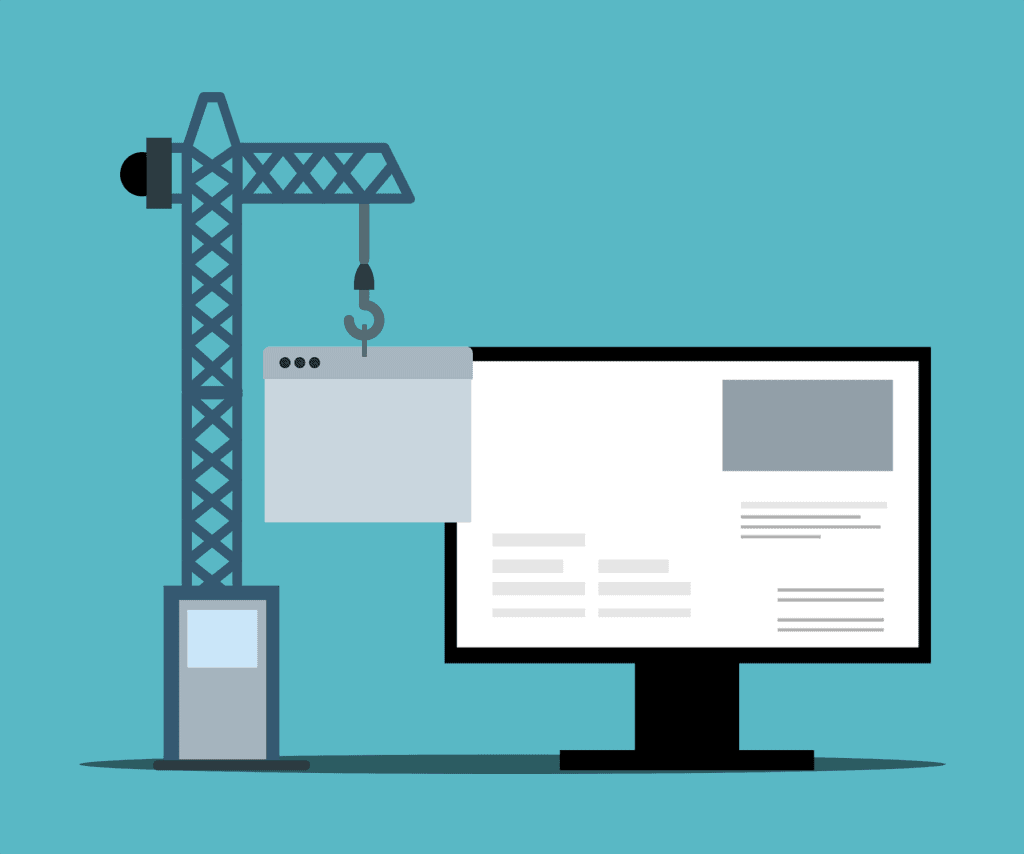
1. Choose a Platform
Choosing a platform for your website can be daunting. There are so many options out there and it’s hard to know which one is best for you. When choosing a platform, there are several factors to consider. And these are one of the key things to know when creating a website.
First, decide what type of website you want to create. Are you creating a blog, an e-commerce store, or just a static site with information about your business? Each type of website has different needs and will require different features from the platform.
Next, choose the size of your budget. Some platforms are free to use while others may require a monthly fee (often based on usage). Consider how much you’re willing to spend on hosting and other services that may be necessary for your site.
Finally, consider the functionality of the platform itself. Does it have all the features you need? Can it handle large amounts of traffic or complex tasks such as handling payments? Do you need additional plugins or add-ons in order to customize it further? Knowing these answers can help you make an informed decision on which platform is right for you.
Ultimately, choosing the right platform depends largely on what type of website you’re looking to create and how much money and time you want.
Here are a few options to consider:
1. Use a website builder: Website builders offer are user-friendly tools that allow anyone to quickly create a website without needing any coding knowledge. It can be a great way to create a simple website.
2. Hire a web designer or developer: Professional web developers and designers can create custom websites that are tailored specifically to your needs.
3. Create a WordPress site. WordPress.org is an open-source CMS (Content Management System) platform that many websites are built on. It’s easy to use and provides a wide range of customization options.
4. Use Squarespace. Squarespace is another popular website builder with powerful design and customization features for creating beautiful websites. As many website builders allow you to get the many website features you need, Squarespace is not an exception here.
5. Utilize Wix. Wix is another popular website builder that’s easy to use and offers a range of already created design templates. Using website builders can help you get a site you want to build much, much quicker.
2. Find Your Domain Name
Finding the perfect domain name for your website can be a challenging task. With hundreds of available domains, it’s hard to know which one to choose. But with a few steps and tips, you can find the perfect domain that fits your needs.
First, decide on the purpose of your website. Are you creating a blog about a specific topic? Or maybe you are launching an e-commerce store? Knowing the purpose of your website will help narrow down the type of domain name you should select.
Once you have decided on the purpose of your website, start brainstorming potential domain names that reflect this purpose. Think about words or phrases that people might search for when looking for websites like yours. You can also use online tools like Domainr or NameMesh to help generate ideas or check if certain words are available as domain names.
Once you have some ideas in mind, it’s time to check availability and pricing. Different registrars offer different prices so it’s important to shop around and compare prices before making a purchase and committing to one domain name.
Finally, once you have found an available domain name that is within budget, complete registration and set up
3. Get Web Hosting Services
Step 3. You’ll need a web host. Web hosting providers give the platform and resources necessary for your website to be available online.
When selecting web hosting services, there are several factors to consider such as the type of website you want, your budget, and the features you need. In this guide, we’ll take a look at what web hosting is and how to select the best hosting service for your needs.
Website hosting is a service that provides space on a server owned by a web host (the company providing the service) for websites and other content. A web host can also provide data center space, connection to the Internet, domain name registration services, and other related services. Hosted websites are stored on computers called servers that are connected to an internet network. When someone visits a hosted website they send requests via their browser which is then directed to the server where it retrieves information from the database or files stored in order to present it back in their browser window.
Try BlueHost, HostGator or check the top list of web hosting providers here.
4. Design Your Website
Designing your website doesn’t have to be complicated or expensive. With the right tools and resources, you can create a professional website for your business or brand in no time.
The first step is to choose a starting point. You can either customize a template or get a website made for you. There are many different platforms out there with different features and pricing, so it’s important to do your research and pick the one that suits your needs best.
When designing your site, make sure everything relates back to your overall branding strategy – from the color scheme and logo placement to font choice and layout design.
How to make a website in 10 minutes? Try Wix, and you will see that the question “Is making a website hard?” will not appear anymore as creating your website is pretty easy with this builder, you can even get a free website within their domain name. Move quicker with your design, you can always change it later.
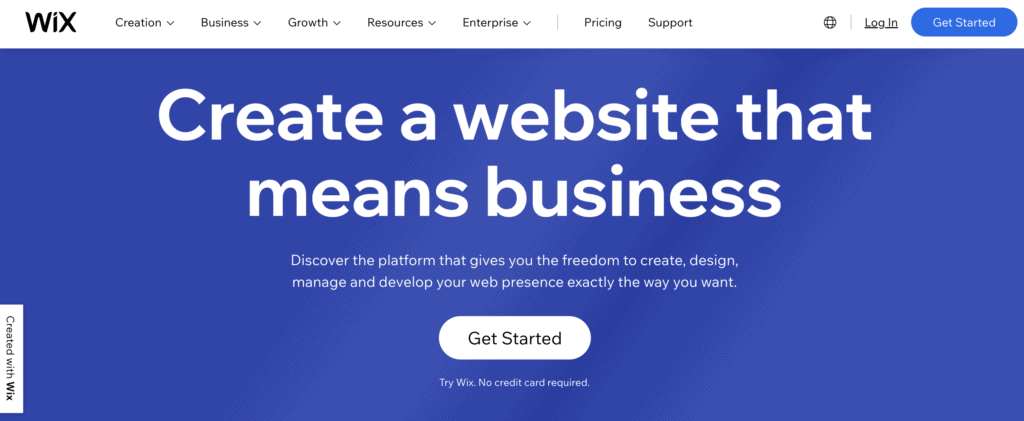
5. Add Essential Pages
Creating a website doesn’t have to be difficult. All you need to do is add essential pages in order to get started. Here are 5 must-have pages that should be included on your website:
1. Homepage: This is the first page visitors will see and should include information about your business, products or services, and contact information.
2. About Us Page: This page is an important way for visitors to learn more about who you are and what you do as a business. It also helps build trust and credibility with potential clients or customers.
3. Contact Page: Your contact information page is where website visitors can get in touch with you, whether it’s through email, phone number, mailing address, or another method of communication.
4. Services/Products Page: If you offer any services or products that people can purchase on your website, this page should provide all the relevant details they’ll need in order to make an informed decision before buying from you.
5. Blog Page: A blog page allows you to post content related to your business such as articles, reviews, how-to guides, etc., which can help attract new customers and keep existing
6. Add Relevant Content and Images
Adding relevant content and images to your website is essential for making it attractive, engaging, and user-friendly. Content should be informative, interesting, and easy to read. Images should be high-resolution, visually appealing, and engaging.
Creating content that is helpful for your website visitors can help build trust with them. This could include blog articles about topics related to your business or product reviews from customers. You can also add videos or infographics to make the content more engaging.
Images are an important part of making a website look great and adding visual interest for visitors. Make sure the images you use are of good quality and relevant to the topic at hand so that viewers don’t get bored or distracted. Additionally, make sure you have permission from photographers before using their photos on your site.
7. Test Your Site for Usability and Functionality
Testing your website for usability and functionality is a must in order to make sure that it provides an optimal experience for users. Usability testing can help you identify areas of improvement in the design, layout, navigation, and user-friendly elements of your website. It can also be used to evaluate how well certain features are working or if they are even necessary at all.
Usability testing can take many forms and ranges in terms of difficulty and investment requirements. Testing methods include user interviews, focus groups, surveys, usability studies, prototype tests, field studies, and A/B testing. Depending on the complexity of your website project, different types of testing may be required.
Usability testing is a great way to validate your idea, website functionality, and design. It gives you insights into how your potential customer interacts with your site so that you can make adjustments accordingly before it goes live. Testing should focus on how well users can complete tasks such as navigating from page to page or entering information into forms correctly. UsabilityHub is another tool to test your designs and mockups on real users – this tool shows visitors’ interactions on your website so that you know exactly what they remember after visiting the site.
8. Monitor Traffic and Analytics
Monitoring website traffic and analytics is an essential part of any successful website or business. It allows you to track user behavior, engagement, page views, and more. Knowing what works and what doesn’t can help you adjust and optimize your website for better performance.
Google Analytics is the most popular tool for monitoring website traffic. It offers comprehensive insights into how visitors interact with your site and helps to identify potential problems such as low bounce rates or slow-loading pages. With Google Analytics, you can easily set up goals, track conversions, and monitor overall performance metrics.
By understanding how users are engaging with your site, you can make informed decisions about the content posted on it or even the design of certain pages. Monitoring traffic and analytics helps to ensure that your website remains optimized for maximum success!
9. Establish Maintenance Practices
How to operate website? Establishing maintenance practices for a website is essential for its long-term success. These practices should include regularly updating content and design, conducting security checks, and backing up data. Keeping a website up to date ensures that it remains secure from cyberattacks and continues to provide value to its users. Additionally, regular backups ensure that if something goes wrong, the most recent version of the site can be quickly restored. Website maintenance also gives you the opportunity to look for any potential problems that could negatively impact your website’s performance or user experience. By having a consistent maintenance schedule in place, you can stay on top of any potential issues before they become serious problems. You can learn these practices or hire a professional.
10. Promote the Website
Promoting your website is essential for driving traffic and achieving success online. With the right strategies, you can reach a larger audience and increase the visibility of your brand. Here are some tips for promoting your website:
Search Engine Optimization (SEO): SEO helps you rank higher in search engine results pages. You can optimize images and content by adding relevant keywords, alt tags, meta descriptions, and more.
Social Media: Post regularly on social media platforms such as Facebook, Twitter, Instagram, LinkedIn, YouTube etc. to reach potential customers and engage with existing ones. Include links to your website in the posts to drive more traffic.
Email Marketing: Reach out to potential customers through email newsletters. Offer discounts or promotions to encourage them to visit your website or buy products/services from it.
Guest Blogging: Write articles or blog posts on websites related to your niche and include links back to your own site in them. This will help you build relationships with other bloggers/influencers in the industry as well as boost visibility for your own website.
Online Directories: Submit your business details on online directories such as Yelp, Yellow Pages etc., so that customers can find out more about you easily
11. Enjoy your website
After completing all the steps above, now you are ready to enjoy your website. Creating a website doesn’t have to be hard, many tools let you create it quickly and easily.
Conclusion
Creating a website is not so complex process. At the end of the process, it’s important to ensure that you have created a website with a good design and user-friendly features. A good website design should be visually pleasing, easy to navigate, and provide an enjoyable experience for visitors. It should also include content that is relevant to your target audiences, such as articles or videos. Additionally, it should use search engine optimization (SEO) tactics to help make sure your content can be easily found by users searching for related topics. With careful planning and execution, you can create a website that meets these criteria and provides an excellent user experience.
But the importance of creating an engaging website cannot be overstated in today’s digital age. A website may be the first impression a potential customer or visitor has of your business, and it can shape how they view the quality of your product or service. An engaging website is one that clearly communicates the purpose and value of your business while providing a pleasant user experience. It should be easy to find information, have eye-catching visuals, and have simple navigation throughout. Keeping content fresh, updated, and interesting will also help to draw attention and keep visitors on your site for longer. Having an engaging website increases brand recognition, and customer satisfaction and ultimately leads to more customers.

